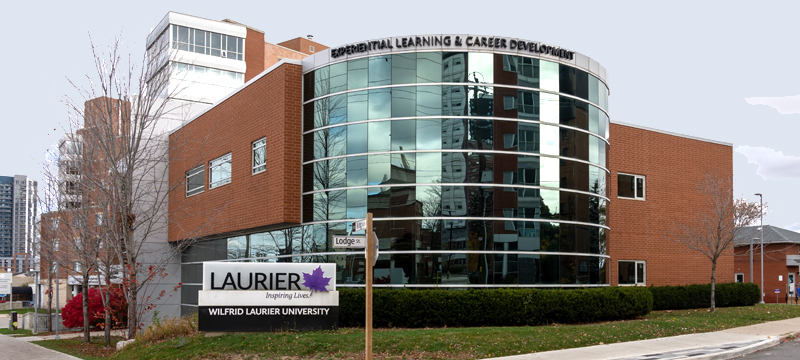…in the beginning
Wilfrid Laurier University’s story began in 1911 when Canada’s first Lutheran seminary school idea was conceived. The Evangelical Lutheran Synod of Canada wanted to train Lutheran ministers and decided to do it in Toronto. However, a twist of fate led them to Waterloo.
Recognizing the opportunity, the Waterloo Board of Trade stepped forward. They offered not only to purchase land on the outskirts of Waterloo but to donate the entire seven acres to the project. This generous offer swayed the Synod, and Waterloo became the chosen location. To solidify their presence, the Synod further invested in purchasing an estate at the corner of Albert and Bricker Streets, adding to the seminary’s footprint.
The Board of Trade wasn’t done yet – they saw the potential and donated an adjacent property, solidifying the seminary’s future in Waterloo.
With a permanent home secured, construction began in 1911. The year saw the rise of not just a seminary building, but also a dormitory, reflecting the intention to house and educate future ministers. This focus on education expanded in 1914 with the founding of the Waterloo College School. This preparatory school provided students with the foundation they needed to pursue theological studies at the seminary.
The first Expansion – Waterloo College
A decade later, in 1924, Waterloo College School took a significant step forward. It began offering its first-degree program – a Bachelor of Arts. This marked a turning point, transforming the institution from a preparatory school to a degree-granting college, offering a broader range of academic opportunities.
By this point, the story becomes a little more straightforward. The Waterloo College of Arts, established in 1924 after the introduction of non-theological courses, continued to evolve.
In 1959, it became Waterloo Lutheran University. This name change reflected the university’s growing focus on secular education alongside its theological roots. However, the story wouldn’t end there.
During the 1950s, significant developments took place at Waterloo College. In 1949, a dining hall was built, and in 1953, the Teaching and Administration building (now the Arts Building) was opened. Additionally, the college started acquiring nearby residential properties for future expansion.
The 1960s saw a boom in student enrollment across Canada. To accommodate this growth, Wilfrid Laurier University, then known as Waterloo Lutheran University, experienced a period of rapid development. New buildings sprang up across campus, including residences, a student services building, a theatre, and a dining hall. The library also saw significant expansion, with construction starting on a multi-phase project that would eventually create a seven-story facility. Even faculty housing wasn’t neglected, with a unique, modern house built for the university president. This period of construction solidified WLU’s physical presence and prepared it for the influx of students to come.
1973 – WLU becomes WLU
The 1970s brought a crucial change for the learning institution. To secure government funding, the Lutheran ties loosened, with the seminary remaining separate. This shift necessitated a new, secular name – Wilfrid Laurier University was born in 1973.
The university also addressed growing needs with new buildings like a student union and a central teaching facility. Campus design shifted too, with buildings connected to each other and facing inwards, creating a more cohesive feel. Older buildings were removed to make way for parking and a new athletic complex.
The 1980s were marked by tighter government funding and control. The university used temporary buildings and leased spaces to meet student needs. A late-80s funding thaw allowed for a new residence and a music building with a performance hall. The 1990s saw construction move to Bricker Avenue, with a large residence and a science building gracing the campus. The university also expanded its footprint by acquiring nearby properties, including the former Seagram Stadium, houses, apartments, and an industrial building.
Moving Forward into the 2000s
The 2000s witnessed a surge in student enrollment at Laurier. To accommodate this growth, another building boom took place. New academic buildings, residences, and a science research center were constructed. The university also continued acquiring land, adding nearby houses, industrial spaces, and even two former elementary schools. To further expand its offerings, Laurier purchased and renovated a building in Kitchener for its Faculty of Social Work. Even existing buildings like the Dr. Alvin Woods Building received a facelift.
The 2010s saw Laurier’s student body continue to grow, prompting further expansion. Properties like the Ezra-Bricker portfolio, with apartments and houses, were acquired. New buildings like the Career Centre and research facilities sprouted on Lodge Street, while existing ones were renovated. The most notable addition was Lazaridis Hall named after Blackberry founder and major university benefactor, Mike Lazaridis. This building was completed in 2017 and was the award-winning home of the WLU business school.
Wilfrid Laurier hasn’t neglected its existing buildings either. Recent years have seen renovations and upgrades to the athletic complex, classrooms, and even the seminary building, now known as Martin Luther University College. By investing in efficiency and improvements, Laurier ensures its campus remains modern and functional for future generations of students.
Today, Wilfrid Laurier University boasts a thriving student body of 20,000, satellite campuses in Brantford and Milton, and offers a wide range of programs in arts, sciences, business, music, and social work. This legacy of learning extends beyond the classroom with WLU Press publishing scholarly works and fostering a vibrant academic community.
From its humble beginnings as a seminary to its current standing as a comprehensive university, Wilfrid Laurier University’s story is one of growth, adaptation, and a continued commitment to academic excellence.

About The Author – Ibrahim Mustapha
Ibrahim crafts high-performance content that connects brands with their audiences and drives impactful results. He has extensive writing experience across various niches, including SaaS, Technology, Health, Nature, and Lifestyle. His track record of earning five-star ratings from clients serves as a proof of his unwavering commitment to excellence.

